Facade
From Schematic to Reality.
We assist architects, general contractors, and manufacturers with various phases of facade and exterior building enclosure projects. These include schematic designs, shop drawings, architectural layouts, presentation drawings, and elevations, to ensure that the facade of your building is both functional and aesthetically pleasing.
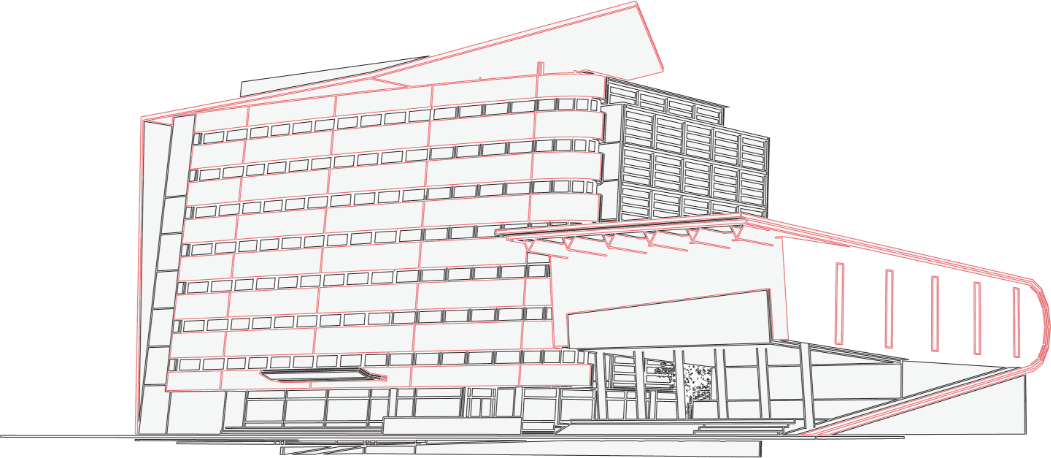
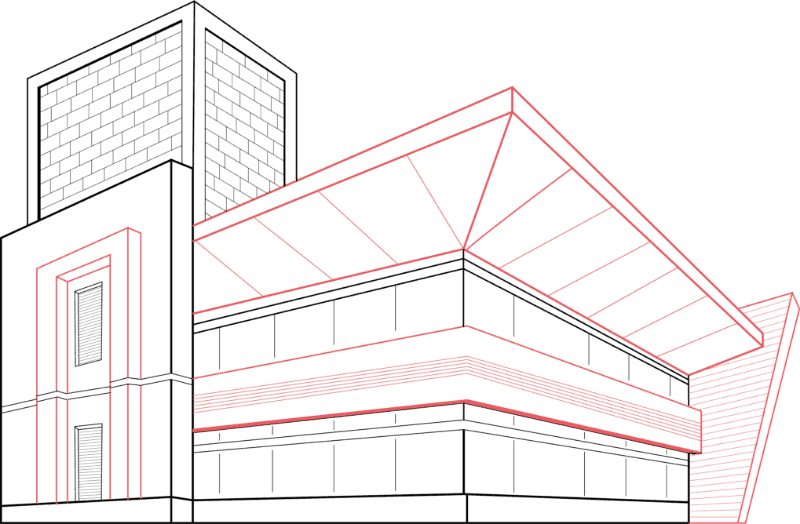
Gsource works as a design-assist at various phases of Facade/Building Enclosure projects. We help architects, general contractors, and manufacturers with schematic designs, shop drawings, architectural layouts, presentation drawings, and elevations.
Metal Framing and Glass
This type of facade includes storefront, window wall, and curtain wall
systems. The metal framing components are primarily aluminum, but
can also include stainless steel, bronze, or other architectural-quality metals.
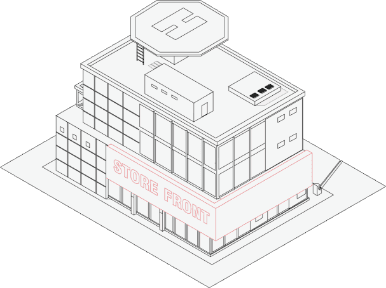
Storefront
A floor-to-floor or floor-to-underside-of-structure enclosure, either one or multiple stories high, located at the base of a building. Plan extents vary, including column-to-column, multicolumn width, or enclosing a floor area.
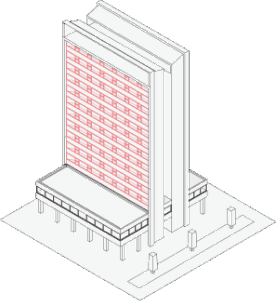
Window Wall
Floor-to-floor, floor-to-ceiling, or floor-to-underside-of-enclosure supported within the building structure at the sill and head. Plan extents vary, including column-to-column, wall-to-wall, or enclosing on itself expanse of framing and glass. Window walls include fixed and operable window openings.
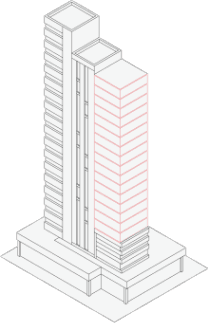
Curtain Wall
A metal framing and glass (or other infill material) enclosure supported from and outboard of the building structure. Curtain wall systems rely on the system anchor to support the enclosure system dead load. The glass and aluminum plate accommodate and transfer lateral loads to the extruded aluminum frame for the structural integrity of the enclosure system.
The molded aluminum framework bears the weight of the glass and other filling or cladding materials. It shifts sideways forces to the system anchor, which then conveys these loads to the main building structure.
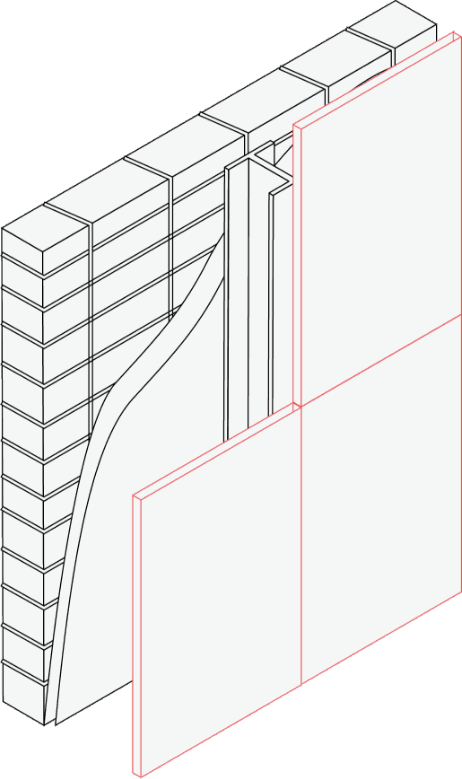
Rainscreen
A rainscreen is a design principle used in construction to protect a building from water infiltration. It involves creating two separate planes: an outer exterior plane made of cladding material that keeps the majority of water on the outside, and an inner plane that acts as a barrier to resist air infiltration and minimal water penetration. The design also includes a cavity zone between the planes to allow air circulation and to control and collect any water that may penetrate the exterior plane and drain it to the exterior. This principle relies on a continuous inner barrier plane, a cavity space, and an outer rain screen plane with joints designed to allow water to evacuate the cavity space, ensuring the building is protected from water infiltration.
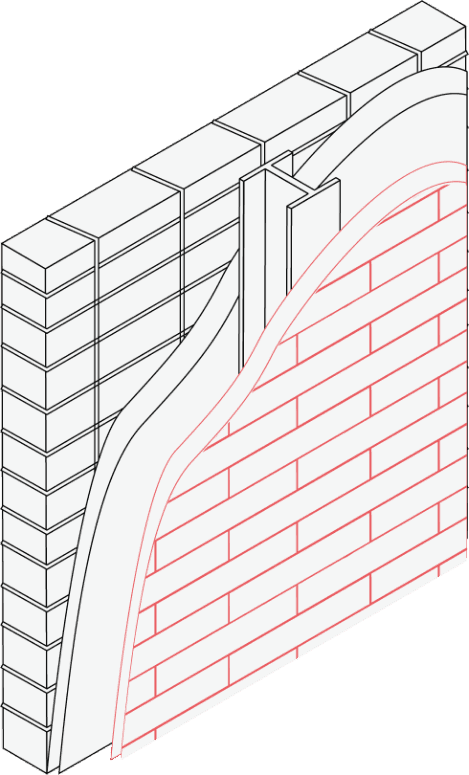
Ceramic, or terra-cotta
Ceramic, also known as terra-cotta, is a popular building material that is commonly used in the construction of facades and exteriors. It is known for its durability, weather resistance, and aesthetic appeal. Terra-cotta is made from clay and is formed into various shapes and sizes, it can be glazed or unglazed, and then it is fired at high temperatures. Ceramic is a versatile material that can be used in a variety of architectural styles and can be easily integrated into a wide range of building designs.
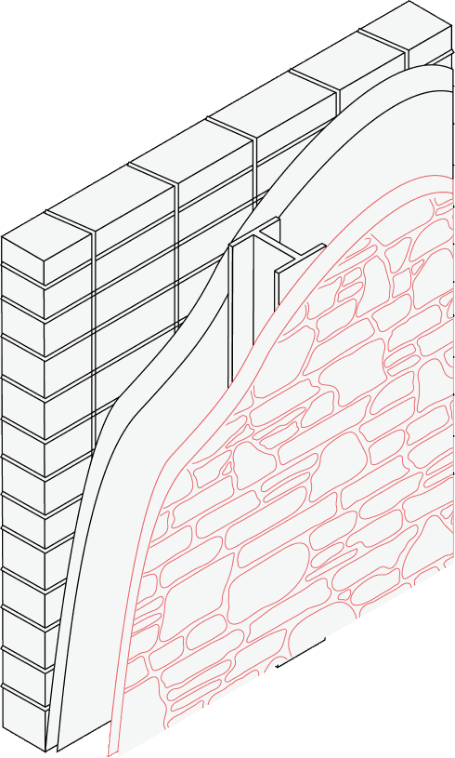
Natural stone panels
Natural stone panels are a popular choice for construction of facades and exteriors because they offer a timeless and elegant look. They are quarried from natural rock formations and come in a variety of types, such as granite, marble, and limestone. Natural stone panels are extremely durable and can withstand extreme weather conditions, making them an ideal choice for high-traffic areas. They require minimal maintenance, and can be cut and shaped to fit any design.
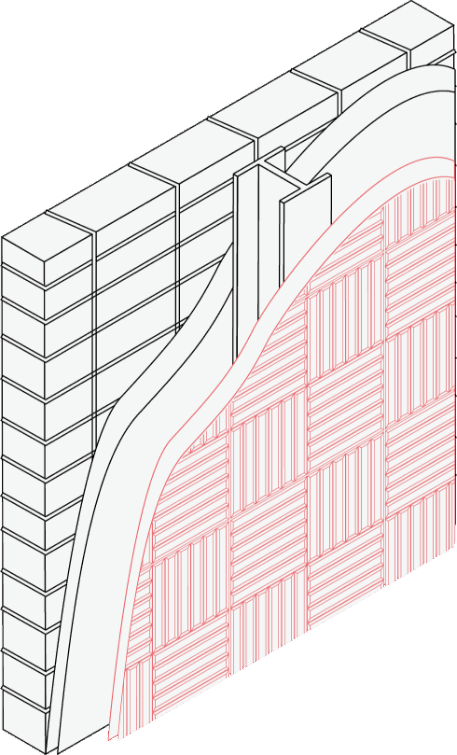
Stone composite panels
Stone composite panels are an innovative building material commonly used to construct facades and exteriors. They are made from a mixture of natural stone and resin, which results in a lightweight, yet durable panel. Stone composite panels are resistant to fire, weather and impact, and are easy to install. They come in a wide range of colors, patterns, and finishes, making them a versatile choice for architects and designers.
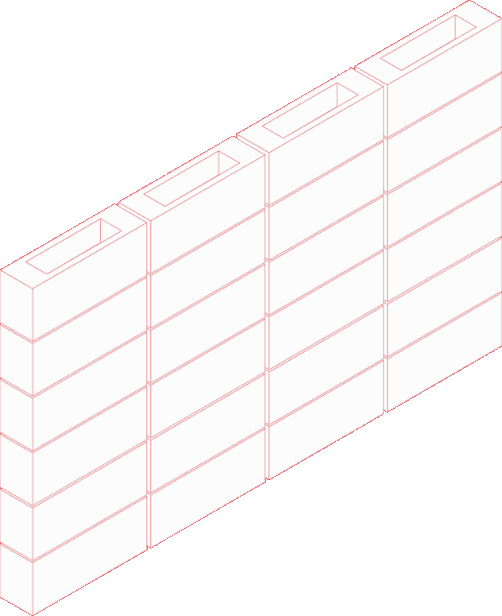
Precast concrete panels
Precast concrete panels are a popular choice for construction of facades and exteriors because they offer a durable and cost-effective solution. They are made by casting concrete in a controlled environment and then transporting the finished panels to the construction site. Precast concrete panels offer a high level of quality control and are available in a variety of finishes, colors, and textures. They can be used in a wide range of architectural styles and can be easily integrated into any building design.
Closed cavity facades
Closed cavity facades are becoming increasingly popular due to their energy efficiency and durability as facades and exteriors. They consist of an outer layer, an air
cavity and an inner layer. The closed cavity allows for improved thermal insulation and air tightness, as well as improved fire resistance. The outer layer can be made
of a variety of materials, including cladding, metal, or natural stone. The inner layer can be made of drywall, masonry or concrete. The closed cavity can also be used
to install mechanical and electrical systems.
The systems are classified by the way they are designed, constructed,
fabricated, and installed. These include:
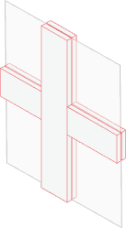
Stick system
This system has vertical and horizontal framing members with glass, aluminum, stone, or other materials as infill. The framing members are usually made of extruded aluminum but can also be made of other architectural-quality metals. These framing members are fabricated in a shop and assembled on-site.
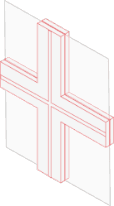
Unitized system
This system has shop-fabricated and assembled frames with glass or other infill materials. The shop-fabricated units are then shipped to the project site and installed on preset anchors on the structure or substructure. The units are joined together at the edges (jamb, head, and sill). Unitized systems have higher quality because they are fabricated and assembled in a controlled shop or factory environment.
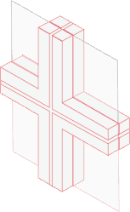
Unitized on a stick system
This system has vertical or horizontal framing members (sticks) made of aluminum or steel. The sticks are attached to the building structure or substructure with preset anchors. The units are shop-assembled and installed on the sticks at the project site. This system is used for higher lateral loading, taller floor-to-floor areas, or multiple unit frames within a floor-to-floor area.

Column cover/spandrel panel system
This system has panelized column covers and/or panelized spandrels. The areas between the column covers and spandrels have stick or unitized.
Our services in Building Enclosure Design:
Getting started is easy
Our scope of work covers the more intricate details to help you what you’re looking for.
